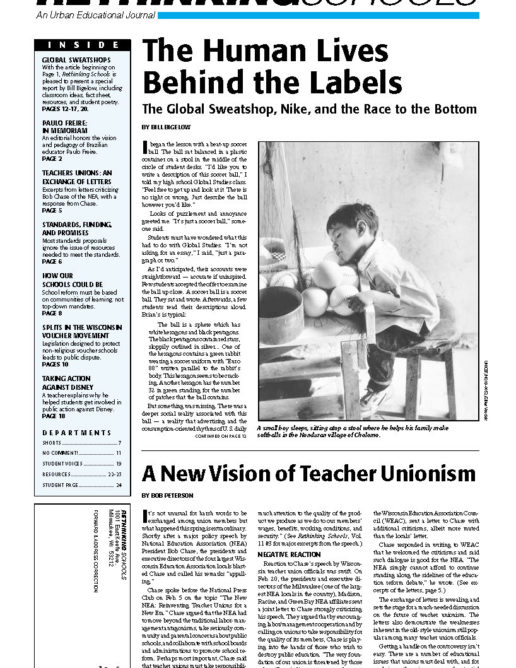Two Powerful Films on Racism
Two important incidents in U.S. race relations have recently been chronicled in films that are useful resources in high school curricula. The films are examples of the profoundly dehumanizing behavior of racism and show how the racist attitudes embedded in our society can lead to mob violence against African Americans.
The first film, “Rosewood,” is a fictionalized account of attacks on the African-American community of Rosewood, FL, in 1923 by residents of the neighboring white community of Sumner, following unfounded allegations that a Black man had beaten a white woman. The entire town of Rosewood was destroyed in the attacks, with an official death toll of two whites and six African Americans. Recent research points to a significantly higher death toll for African Americans.
As an additional resource, teachers may want to use a 1993 historical report on the Rosewood incident that is available on the Internet. The report is based on research led by Maxine Jones, an associate professor at The Florida State University, who looked at manuscripts, legal depositions, interviews, newspaper accounts, and published and unpublished books. Jones presented her research to the Florida Board of Regents in 1993, which resulted in the Florida legislature providing $7 million in reparations to the victims and descendants of the Rosewood massacre.
In the film, director John Singleton uses artistic license by creating a fictional lead character. But from reading the 1993 report it is clear that Singleton powerfully folds details from an array of accounts into a coherent depiction of the Rosewood massacre.
The second film, released in 1991, is “Black Wall Street: A Lost Dream.” A good companion resource is the 1992 book “Black Wall Street: A Black Holocaust,” by Ron Wallace and J.J. Wilson.
“Black Wall Street” tells the story of the Black community of Greenwood in Tulsa, OK in the 1920s. The community was named “Black Wall Street” by Booker T. Washington because this 36-block business area was considered one of the most vibrant African-American commercial centers in the country.
On June 1, 1921, whites from the surrounding neighborhoods in Tulsa led an attack on the Greenwood section that resulted in the neighborhood’s total destruction. The attack was precipitated by accusations by a white woman that a Black man had attacked her. Later, it was made apparent there was no attack and that the destruction of Greenwood had far more to do with the white power structure’s resentment of the success of the Black middle class in Greenwood.
At the height of the attack, as many as 10,000 whites, a number of them armed with guns they had looted from downtown stores, were rampaging in black neighborhoods. The official death toll of African Americans was 36 people but eyewitness reports claim the actual number was in the hundreds. The entire Greenwood section was burned and razed to the ground.
“Rosewood” is expected to be released on video this summer. “The Rosewood Report” presented to the Florida Board of Regents in 1993 is available on the Internet at http://www.freenet.scri.fsu.edu/ doc/rosewood.txt. Additional information is available at http:// www.freenet.scri.fsu,edu/doc/rosewood2.txt
The video “Black Wall Street: A Lost Dream” and the book “Black Wall Street: A Black Holocaust” are available from Duralon Entertainment Inc., PO Box 2121, Muskogee, OK 74402. 918-682-6268 or 1-800-682-7975.The video costs $33.95, including shipping and handling, and the book costs $29.95, including s&h.

